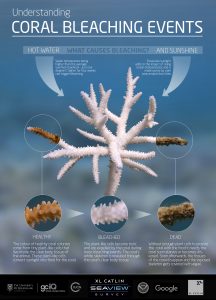
The biggest news in plant science is the awarding of the Nobel Prize in Physiology or Medicine to Tu Youyou for her discovery and development of the antimalarial drug artemisinin from the plant Artemisia annua. The other half of the prize was shared by Satoshi Ōmura and William C. Campbell for the development avermectins, also derived from natural sources (Streptomyces bacteria) and used to treat river blindness and other illnesses caused by parasitic roundworms. It’s interesting that both lauded drugs treat diseases that disproportionally affect the poor.
The recognition of Tu Youyou’s work is significant for several reasons: she is the first citizen of China to be awarded a Nobel Prize, her most impactful work was published in Chinese, and it acknowledges the opportunities to be found by searching for drugs from natural products and Traditional Chinese Medicine. Biographies of Tu Youyou were published by the New York Times, New Scientist, and The Guardian amongst other newspapers. You can also read about her work in her own words in this review published in 2011 in Nature Medicine. If you are teaching, you will enjoy this animated video made by NPR about the history of malaria drugs that includes the discovery of artemisinin. Finally, for further references on medicinal plants, artemisinin and Traditional Chinese Medicine, see “Medicinal Plants: Past, Present and Future”.
Ellis, J., and Williams, M.E. (January 28, 2013). Medicinal Plants: Past, Present and Future. Teaching Tools in Plant Biology. The Plant Cell doi/10.1105/tpc.113.tt0113.
McKenna, P. (2011 updated 2015). Nobel Prize goes to modest woman who beat malaria for China. New Scientist, 5 October 2015.
NPR (2012). Animation: Herbs And Empires: A Brief, Animated History Of Malaria Drugs.
Perlez, J. (2015). Answering an Appeal by Mao Led Tu Youyou, a Chinese Scientist, to a Nobel Prize. New York Times, 6 October 2015.
Phillips, T. (2015). Tu Youyou: how Mao’s challenge to malaria pioneer led to Nobel prize. The Guardian 5 October 2015.
The Nobel Prize in Physiology or Medicine 2015. Nobelprize.org. Nobel Media AB 2014. Web. 6 Oct 2015.
Tu, Y. (2011). The discovery of artemisinin (qinghaosu) and gifts from Chinese medicine. Nat Med. 17: 1217-1220.

The other big news story this week is the confirmation that we are experiencing the third major coral bleaching event (the first was in 1998, and the second in 2010). The bleaching event is correlated with rising ocean temperatures and El Niño events. Although coral are animals, they are photosynthetic animals that house algae within them. Bleaching refers to the death or expelling of the algae from the coral bodies, which results in coral death. Because corals provide fundamental environments, food and shelter for marine organisms, the death of the coral will have big imacts on other marine life. You can find all of the information you could want for teaching and learning about this important event at the Global Coral Bleaching site (http://www.globalcoralbleaching.org/) including this infographic that explains what coral bleaching is. Additional references into the cell biology of the coral-algal symbiosis are listed here, but browse the Global Coral Bleaching site for loads more information.
Fournier, A. (2014). The story of symbiosis with zooxanthellae, or how they enable their host to thrive in a nutrient poor environment. BioSciences Master Reviews.
Roth, M.S. (2014). The engine of the reef: Photobiology of the coral-algal symbiosis. Front. Microbiol. 5: 422.
Venn, A.A., Loram, J.E. and Douglas, A.E. (2008). Photosynthetic symbioses in animals. J. Exp. Bot. 59: 1069-1080.
Weis, V.M. (2008). Cellular mechanisms of Cnidarian bleaching: stress causes the collapse of symbiosis. J. Exp. Biol. 211: 3059-3066.

1 thought on “Plants in the News, October 9 2015: Artemisia annua and coral bleaching”